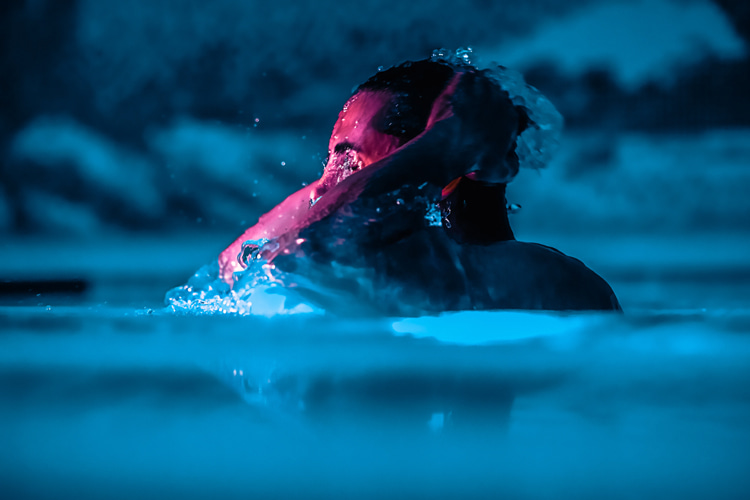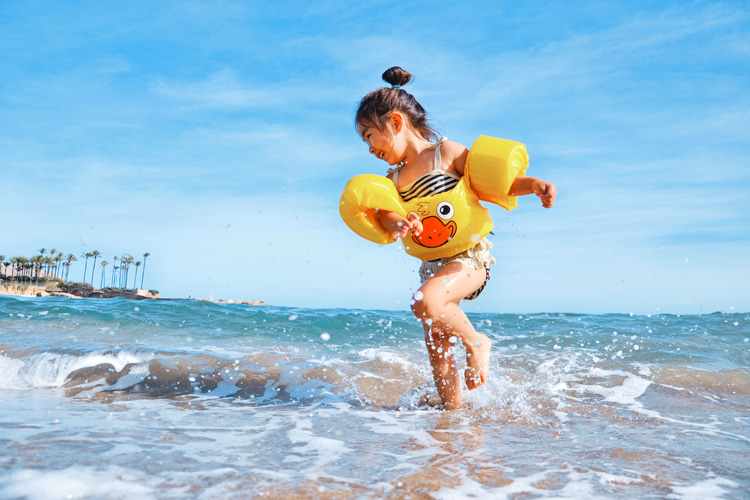Dry drowning is a non-medical term often used to describe a drowning incident that doesn't involve the lungs filling up with water, as is typical in most drowning cases.
Instead, it refers to a scenario where a small amount of water is inhaled and causes a spasm of the vocal cords (laryngospasm).
This spasm can cause the vocal cords to shut, blocking the airway and making breathing difficult.
Imagine taking a sip of your drink, but instead of swallowing it down, you accidentally inhale a tiny bit.
That sudden choking feeling and coughing spell that follows? That's because the liquid has gone down the "wrong pipe," so to speak.
Now, in most cases, this coughing helps clear the airway.
But in rare cases, especially if the water is inhaled suddenly or with force (like after being splashed or dunked), it can trigger a laryngospasm.
The body's response, in this case, is essentially a defense mechanism. It's trying to prevent water from getting into the lungs by shutting the airway.
But this can backfire if the airway remains closed, as it restricts the airflow and oxygen supply.
The term "dry" is used because the lungs aren't necessarily filled with water, as in typical drownings.
Instead, the danger arises from the body's reflex response to the presence of water.
In essence, dry drowning is a potentially life-threatening condition caused not by the volume of water but by the body's reaction to water entering the airway.
It's important to note that while the term is commonly used in media and layperson's discussions, it's not widely used or recognized in professional medical communities.
They often prefer more descriptive terms like "laryngospasm" or just refer to it as a type of drowning.

Is Dry Drowning Real?
As we've seen above, dry drowning is real, but it's not as prevalent as TV, newspapers, and magazines sometimes portray.
The term can be a little misleading, as it does not involve a person being submerged in water in the traditional sense.
However, if untreated, the results can be as dire as those of typical drowning incidents.
Comparing Drowning: Wet vs. Secondary vs. Dry
At its core, drowning is the process of experiencing respiratory impairment due to submersion or immersion in liquid.
Let's explore the differences:
- Wet Drowning: This is the most commonly recognized form of drowning, where water enters the lungs, inhibiting breathing;
- Secondary Drowning: This happens hours after the water has entered the lungs, causing inflammation and swelling, making breathing difficult;
- Dry Drowning: Here, the victim inhales a small amount of water, causing the vocal cords to spasm and close, leading to breathing difficulties;
While all three are concerning, dry and secondary drownings aren't immediate but develop hours after water exposure.
When Can It Happen?
Dry drowning can occur after being in the ocean, just as it can after exposure to other bodies of water like pools, lakes, or bathtubs.
It can be triggered by inhaling a small amount of water from any source, whether saltwater from the ocean or freshwater from a wave pool.
When at the ocean, remember that powerful waves and currents can unexpectedly push water into a person's face or cause them to be submerged suddenly.
It can happen unexpectedly, even if you're a prolific surfer or swimmer.
Symptoms and Visible Signs
Recognizing dry drowning can indeed be the difference between life and death.
The symptoms can manifest up to 24 hours after water exposure:
- Coughing;
- Chest pain;
- Difficulty breathing;
- Fatigue;
- Behavioral changes, such as mood swings or forgetfulness;
- Pale skin;
If someone exhibits these signs after a water-related incident, it's essential to seek medical attention immediately.
How Much Water Causes It?
Surprisingly, only a small amount of water is needed to trigger dry drowning.
While the exact amount can vary from person to person, even a few droplets in the wrong place can cause the vocal cords to spasm and close up.
How Common Is It?
While drowning remains a serious concern, especially for children, dry drowning is relatively rare.
The exact prevalence is difficult to pinpoint because it's not always clearly differentiated from other types of drowning in statistical analyses.
But rest assured, while it's essential to be informed and vigilant, most water-related incidents do not result in dry drowning.
Are Children More Susceptible?
Children, especially those under the age of five, are indeed at a higher risk.
Their smaller bodies can be more affected by even tiny amounts of water, and they might not be able to articulate or even recognize what they're feeling.

Emergency Responses: Recognizing a Victim
If someone, especially a child, has breathing problems or shows the symptoms listed above after being in the water, it's crucial to act fast:
- Call emergency services immediately;
- Monitor the person's breathing and, if necessary, administer CPR;
- Ensure they are kept in a position where they can breathe as comfortably as possible;
Prevention Measures
Knowledge is power.
Understanding the risks and being vigilant, especially with children, can make all the difference:
- Always supervise children in the water, regardless of their swimming abilities;
- Teach children to blow the water out and to avoid swallowing it;
- Understand the symptoms of dry drowning, and be alert to any changes in someone after they've been in water;
Treatment Options
Early recognition is key.
If dry drowning is suspected, the primary goal is to ensure the affected person can breathe.
Hospital treatment might involve oxygen therapy or medications to reduce inflammation in the airway.
